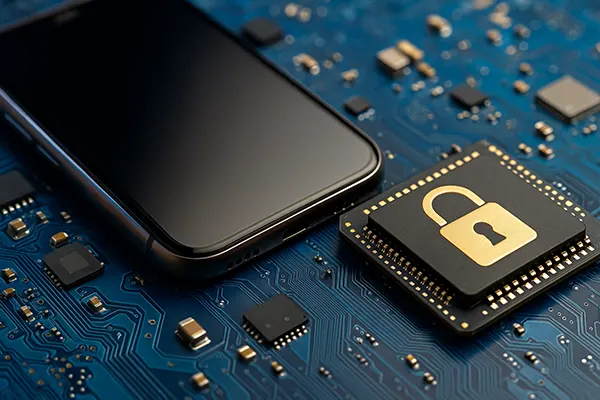The year 2025 marks a pivotal moment in the evolution of mobile connectivity. Traditional SIM cards are gradually giving way to more integrated and digital alternatives—eSIM and iSIM. These technologies are not only reshaping how users interact with mobile networks, but also redefining device design, security protocols, and global connectivity strategies. Let’s examine what this means for smartphone users and the telecom industry in the near future.
The Rise of eSIM: From Concept to Mainstream
Embedded SIM (eSIM) has transformed from a niche technology into a viable standard adopted by leading smartphone manufacturers. Unlike physical SIM cards, eSIMs are soldered into a device’s motherboard and can be reprogrammed remotely. This eliminates the need for physical swapping and enables faster network switching—especially useful for travellers or multi-network users.
Apple, Samsung, and Google have already embraced eSIM in most of their recent models, while operators across Europe, Asia, and the Americas now support eSIM provisioning. In 2025, the market penetration of eSIM is expected to exceed 60% of new smartphone shipments globally, driven by demand for seamless activation and environmental concerns related to plastic SIM cards.
For users, this means greater flexibility in choosing and switching mobile providers, no need for SIM trays or pins, and improved device waterproofing thanks to a sealed design. For providers, eSIM enables dynamic provisioning, new bundling models, and enhanced security through tamper-resistant modules.
Challenges That Still Remain
Despite its growing popularity, eSIM adoption is not without obstacles. One key issue is inconsistent support across countries and operators, creating a fragmented experience for global users. Moreover, some providers still require in-person visits or physical QR codes for activation, which limits the promise of a fully digital experience.
Another challenge is user education. Many consumers remain unaware of how to use or activate an eSIM, and some are sceptical of losing physical control over their mobile identity. Transparency, clear UI/UX, and carrier training are critical to overcome these barriers.
Finally, regulators in certain countries are slow to adapt. Restrictions on eSIM-enabled services in regions like Africa or parts of South America hinder the global vision of uniform digital connectivity.
Introducing iSIM: The Next Logical Step
Integrated SIM (iSIM) builds upon the foundation laid by eSIM. It integrates the SIM functionality directly into the device’s main processor (System-on-Chip), reducing the component footprint to near zero. Qualcomm, MediaTek, and ARM have already presented chips supporting iSIM, and commercial deployments are gaining traction in 2025.
This level of integration improves energy efficiency, reduces manufacturing costs, and opens the door to even smaller and sleeker device designs—important for wearables, IoT gadgets, and ultra-slim smartphones. In practice, iSIM could make it easier for OEMs to create compact devices without compromising on mobile network access.
Another important aspect of iSIM is its potential in large-scale industrial and automotive IoT environments. With over-the-air provisioning and hardware-level security, it offers enterprise-grade control and scalability, making it ideal for smart cities, logistics, and automotive telematics.
Security and Performance Benefits
iSIM modules benefit from being embedded into secure enclaves of the main processor, offering higher resistance to tampering and cyber-attacks. This is especially relevant for enterprises and public infrastructure relying on secure machine-to-machine (M2M) communication.
Performance-wise, iSIMs eliminate latency associated with separate components. They support faster provisioning and better synchronisation with the mobile OS, allowing for quicker connectivity and updates in real-time environments.
In terms of privacy, iSIMs make it more difficult to spoof device identities or access mobile data without authorisation, thanks to tighter hardware-software integration. However, this also raises new concerns about centralisation and vendor lock-in, which must be addressed through standardisation and open ecosystem practices.

What This Means for Consumers and Mobile Operators
For everyday users, the shift to eSIM and iSIM means a future where switching mobile providers is as simple as scanning a code or downloading an app. It also promises universal compatibility, fewer hardware failures, and enhanced travel experiences thanks to seamless roaming.
Mobile operators, on the other hand, are undergoing a transformation in how they onboard customers and manage network access. With remote provisioning and real-time SIM profile switching, telcos can offer dynamic data packages, improve customer support, and even reduce churn.
By 2025, many telcos are launching digital-only plans designed specifically for eSIM and iSIM users. These plans often include enhanced security, roaming bundles, and AI-driven usage insights. This shift is expected to become the new standard for mobile subscription models over the next few years.
Preparing for the Future of Connectivity
To stay competitive, both consumers and mobile providers must embrace this connectivity evolution. For users, it’s crucial to verify whether their devices support eSIM/iSIM and to choose networks offering flexible activation methods. Awareness and education will play a pivotal role.
Mobile operators must continue investing in backend infrastructure, user onboarding tools, and compatibility across devices and platforms. Additionally, they should push for global standardisation of eSIM and iSIM provisioning to ensure a frictionless customer journey across borders.
Ultimately, eSIM and iSIM are not just technological trends—they’re enablers of the next era in mobile communication. By simplifying connectivity, increasing security, and enhancing device design, they reflect a broader shift towards embedded intelligence and digital freedom in mobile networks.




